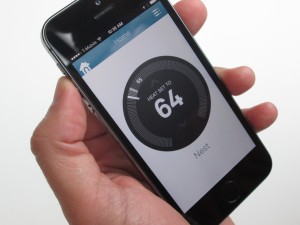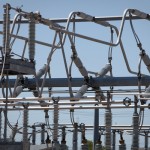Here’s Who Will Pay You to Use Less Power in Texas
There’s a heated debate going on among state regulators and all over newspaper op-ed pages in Texas: Do we have enough power to meet the demand of our growing population? That answer largely depends on how to spin the latest forecasts and reports, but what is clear is this: the state’s actual power demand hasn’t grown as fast as expected.
One big factor in that slowing consumption trend is something called demand response, programs that get participants to use less power when supplies on the grid are tight, like during the hot Texas afternoons when air conditioners across the state are running full-time. Some utilities and power companies give rebates for using less power during that time, or to shift power use to other times of the day.
These demand response programs are on the rise in Texas. In Austin, enough participants are expected this summer that the city is saving itself from using an entire power plant.
So we’ve put together a list of the available programs we could find in Texas for demand response:
Austin and San Antonio, which fall under regulated utilities, each have a program, while in most places outside of those two cities you can choose among several options from private power companies.
AUSTIN
Austin Energy, the city-owned utility, will give you $85 for signing up for its ‘Power Partner Thermostats‘ program. That money can go towards one of the internet-connected thermostats required to participate. In exchange, you agree to have your AC turned up during some weekday afternoons during the summer:
“We schedule events that override/modify your thermostat settings on about 15 days a year from June through September. During peak hours (typically 4:00 p.m. to 6:00 p.m.), an event may adjust your setting by 4 degrees or cycle the system off for 20 minutes per hour.”
If you’re home during that time and get uncomfortable, you can override it and set the temperature lower. Nest, one of the smart thermostats partnered with Austin Energy, says only ten percent of users with its thermostat adjusted their temperature ten percent of the time.
SAN ANTONIO
San Antonio has two demand response programs. ‘Home Manager‘ gives you a smart meter, smart thermostat, and “monitoring and control devices for your outside AC unit and your electric water heater,” according to CPS Energy, the city-owned utility. Equipment and installation are free.
In exchange, participants agree to take part in ‘Conservation Events,’ when CPS deploys demand response because energy demand is peaking or there are issues on the grid. From CPS:
“These events usually occur between 3 and 6 p.m. and only last two or three hours. Also, during that time period the adjustment to your thermostat is always 3 degrees and you can opt out at any time and return to your normal settings. All you have to do is change the temperature on your thermostat or the web portal and the system will return to that setting. Conservation events don’t occur very often, but they are crucial in managing the energy needs of the city.”
The utility also offers a smart thermostat program. In exchange for a free Honeywell smart thermostat, residents agree to participate in “cycling” during some summer days. That means their AC is turned off for about ten minutes each half hour during times of peak demand.
MOST EVERYWHERE ELSE IN TEXAS
Reliant Energy: Reliant will not only give you a free Nest thermostat with their ‘Learn and Conserve’ plan, they’ll also pay you for using less AC during times of peak demand, $0.80 per kWh. (That could add up to about $20 each summer.)
Bounce Energy: The company has a ‘Peak Rewards‘ program, which gives customers 5% back during summer months for using less energy during times of peak demand. There’s no thermostat incentive, however, and on their website Bounce says the program is closed to new participants at this time.
Green Mountain Energy: This retail electric provider offers a free Nest learning thermostat (worth $250) for signing up for a 100% renewable power plan called ‘Pollution Free Efficient.’ While the program doesn’t have a demand response component like the one with Austin Energy, it does utilize a program called ‘Seasonal Savings’ developed by Nest:
“In the winter and summer, the Nest Thermostat automatically fine-tunes the temperatures in your heating and cooling schedule by a few degrees to be more efficient while keeping you just as comfortable. You can change the temperature or adjust your schedule at any time, but Nest owners with Seasonal Savings can use 5-10% less heating and cooling that season.”
TXU Energy: The private power company offers a popular ‘Free Nights or Weekends‘ program which gives participants electricity at no cost either at night or on weekends in exchange for a higher daytime or weekday rate. The company announced last year that nearly 100,000 people had signed up for the program.
Direct Energy: Under a new plan announced this week, Direct Energy will give you up to three smart thermostats (installation is charged, however) and a fixed 24-month rate if you sign up for its Meridian Savings Plan. The thermostat can be controlled remotely via a smartphone. There is no demand response per se, but Direct Energy says the thermostat will guide customers towards more efficient energy use based on their consumption. The plan is only available in the Dallas-Fort Worth and Houston areas.
What Comes Next?
If more people sign up for programs like these over the next few years, conservation during peak demand could meet fifteen percent of the state’s power needs during peak times, according to a review of the Texas electricity market. In other words, 15 percent of the state’s power needs on those hot summer afternoons could be met by programs like the ones below when combined with existing demand response programs for industrial users.
Marita Mirzatuny of the Environmental Defense Fund breaks down the numbers:
“Demand-side resources – like DR, renewable energy, efficiency, and energy storage – give the consumer flexibility and leverage in their energy usage and generation, playing a key role to ensuring grid reliability, affordability, customer choice and environmental sustainability. According to the Brattle Group, Texans could achieve as much as 13,000 MW of demand response by 2019, with the majority (7,661 MW) coming from residential customers, a group that accounts for “more than 70 percent of peak load.””
In San Antonio, CPS Energy’s demand response programs have helped at times other than just the power crunch of summer. During the recent polar vortex that strained the Texas grid in winter, CPS used its demand response program and “saved about 47 megawatts of power use through its two demand response programs,” Jim Malewitz writes in the Texas Tribune. “That is enough to power 19,975 homes under normal conditions and 8,460 homes at peak times.”
Do you know of a demand response or load-shifting program in Texas but don’t see it on the list? Tell us about it in the comments so we can add it to the list.



